When you think of the United Arab Emirates, Dubai usually comes to mind, with its futuristic skyscrapers and endless extravaganzas. But just a couple of hours away by road, Abu Dhabi offers a different side of the country: quieter, more elegant, and, in some ways, more authentic.
In this post, I share my experience exploring the Emirati capital. A place where time seems to move a little slower, ideal for a leisurely stroll along the Corniche or lingering admiring the impressive Sheikh Zayed Grand Mosque. While it doesn't have as many attractions as Dubai, Abu Dhabi left me with a different... and positive... feeling. Here, I'll tell you why it's worth spending a few days there.
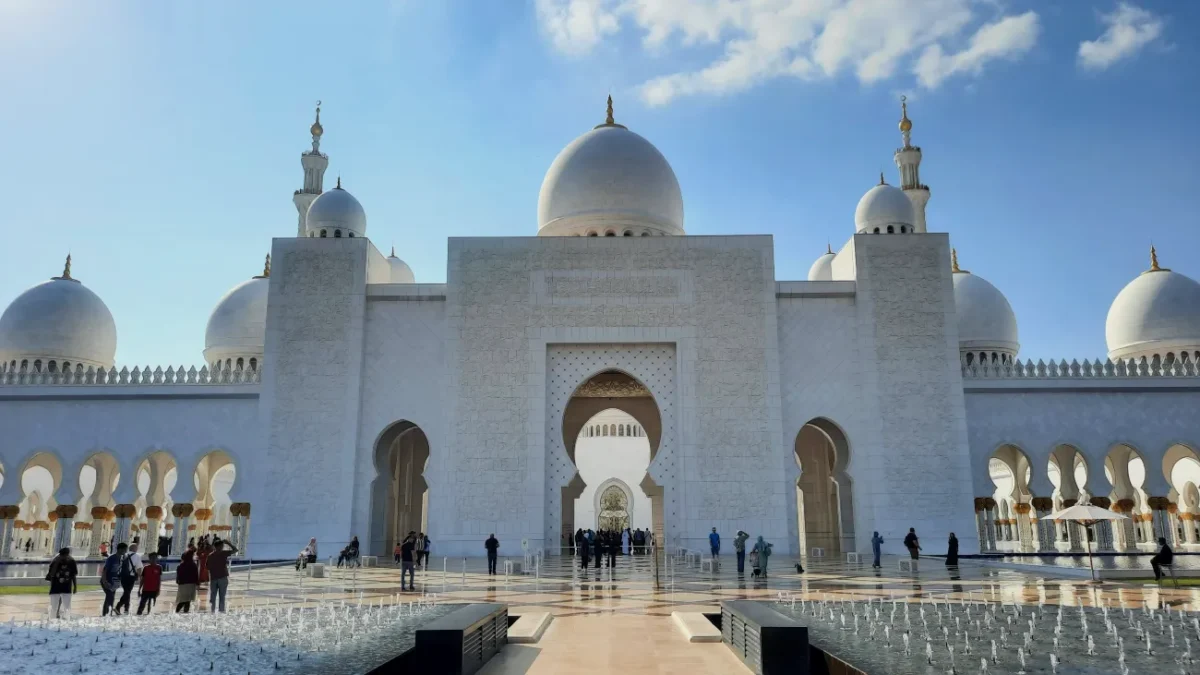

Table of Contents
A surprise upon arrival: Where are the Emiratis?
As soon as I arrived in Abu Dhabi, I encountered a surprise I hadn't expected. Walking the streets, entering stores, or using public transportation, most of the people I encountered weren't Emiratis, but rather immigrants from countries like India, Pakistan, Bangladesh, Nepal, or other parts of the Middle East. They are the ones who sustain much of the city's daily operations, from taxi drivers and hotel employees to those working in restaurants and supermarkets.
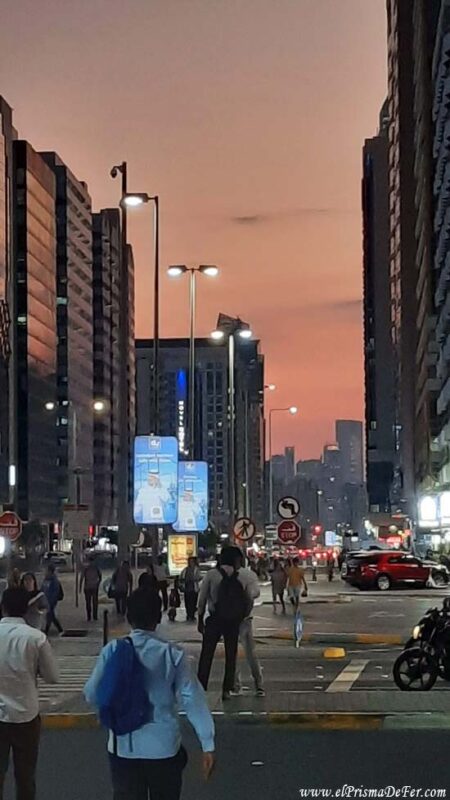
Emirati locals, on the other hand, were a much rarer presence in everyday life. I saw them mostly driving high-end cars, strolling through luxury shopping malls, or walking with their families along the Corniche at sunset. I struggled to connect with them, not only because they were few and far between in the more public and affordable spaces, but also because they tend to move in more closed, familial circles.
This contrast left me thinking about the country's social structure. Abu Dhabi, like much of the United Arab Emirates, is a city built and sustained by a large base of foreign workers, while Emirati citizens, a minority in their own country, occupy different roles and are much less exposed to the average visitor.
How to get to Abu Dhabi
From Dubái
Getting from Dubai to Abu Dhabi is very easy and affordable. The most popular option for independent travelers is to take an intercity bus. The bus company RTA (Roads and Transport Authority) operates several daily services between the two cities. The journey takes about two hours, and buses depart frequently from Al Ghubaiba Terminal or from Ibn Battuta. The cost is around 25 AED (about 7 USD). You can also share a taxi or take a private car, although the price is quite high. For those renting a car, the E11 highway is direct and in good condition.
From abroad
Abu Dhabi has its own international airport (AUH), which receives flights from all over the world. Etihad Airways, the national carrier, is based there and connects to cities in Europe, Asia, the Americas, and Africa. Other airlines include Turkish Airlines, Lufthansa, Qatar Airways (via Doha), EgyptAir, and several low-cost carriers from nearby destinations.
Another common alternative is to fly to Dubai (DXB or DWC), which has more options and cheaper flights, and from there connect by land to Abu Dhabi.

If you are thinking of traveling to the United Arab Emirates, you may be interested in reading the Guide I wrote for getting around the country.
How to get from Abu Dhabi Airport to the city center
Abu Dhabi International Airport (AUH) is located approximately 30 kilometers from the city center. Below are the most common options for getting to your accommodation from there:
- Taxi: This is the fastest and most convenient way. You'll find an official taxi rank as soon as you leave the airport. The trip to the city center takes between 30 and 40 minutes, depending on traffic, and costs approximately 70 to 100 AED. All taxis are metered, and you can pay by card or cash.
- Public Bus: If you want to save money, the A1 bus connects the airport with downtown Abu Dhabi. It runs 24 hours a day, with a frequency of approximately 40 minutes. The journey takes around 45 to 60 minutes and the ticket costs only 4 AED. This is a safe and economical option, although less practical if you arrive with a lot of luggage or in the early morning.
- Private transportation or apps like Uber/Careem: You can also book private transportation in advance or use apps like Careem (very popular in the Emirates) or Uber, although the latter doesn't always have immediate availability. This is ideal if you prefer convenience and don't want to worry about anything upon arrival.
🚌 How to get around Abu Dhabi
Abu Dhabi, like Dubai, isn't as walkable as other cities, as many of its attractions are somewhat spread out. However, there are several ways to get around the city:
- Public buses: They're cheap and quite efficient. The network covers much of the city and surrounding areas. To use them, you need a Hafilat card, which you can purchase and recharge at terminals or kiosks. While they're not as fast as the Dubai Metro, they're a good option for getting around on the cheap.
- Taxis: These are very common, safe, and relatively affordable. You can also use apps like Careem or Uber, although traditional taxis are usually cheaper.
- On foot or by bike: Only recommended in specific areas like the Corniche or parts of the city center. In summer, the heat makes it almost impossible.
- Metro: there is no metro in Abu Dhabi
How to use public transport in Abu Dhabi
To get around Abu Dhabi using public transport, you'll need the Hafilat card.
- It is used for traveling on urban and interurban buses within the emirate.
- It can be purchased at bus terminals, main stations and designated points in the city.
- It costs approximately 5 AED, plus the minimum recharge which is usually 10 AED.
Important: The Hafilat card is only valid for public transport within Abu Dhabi, it is not valid for travel in other emirates such as Dubai.

Map of the main tourist attractions in Abu Dhabi
What to see in Abu Dhabi: 9 must-see places you can't miss
You're probably wondering what to see in Abu Dhabi, the country's capital. Although often overshadowed by mass tourism in Dubai, this city surprises with its elegance, modernity, and tranquility. Here are the best tourist spots in Abu Dhabi, ideal for exploring in a few days.
🕌 Sheikh Zayed Grand Mosque, the symbol of Abu Dhabi
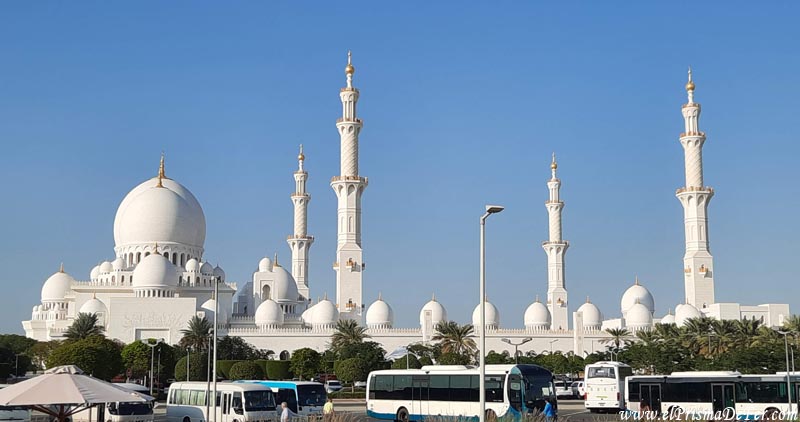
The Abu Dhabi Grand Mosque, also known as the Sheikh Zayed Mosque, is not only the city's main architectural icon, but also one of the most majestic I've ever seen. Its immaculate whiteness contrasts with the blue sky, and its monumental scale is striking from the first moment.
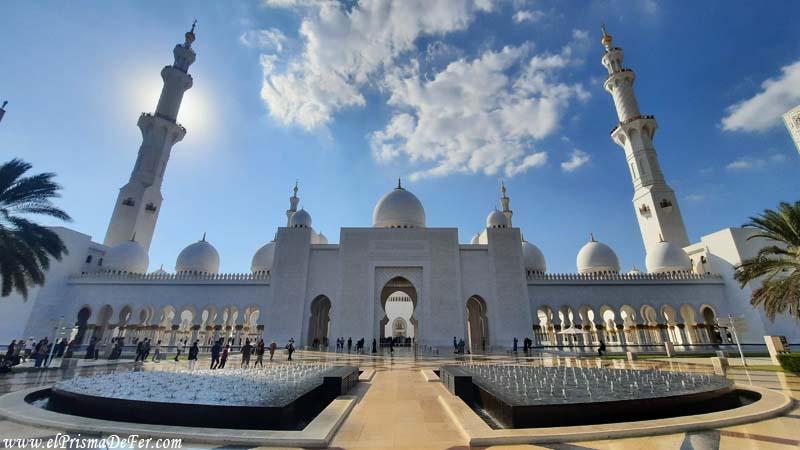
It features 82 domes and more than a thousand columns decorated with marble, precious stones, and gilded details. The interior is full of astonishing details: a hand-woven Persian rug, considered the largest in the world, covers the entire main hall. Giant, colorful Swarovski crystal chandeliers hang from the domes with an elegance that blends the traditional with the modern.
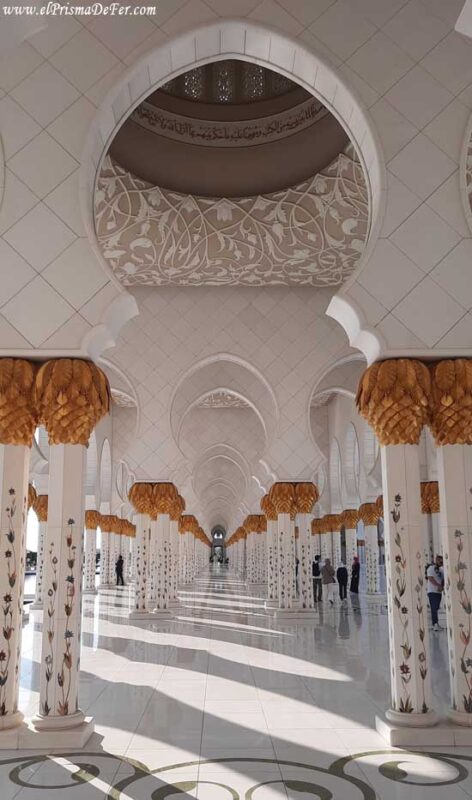
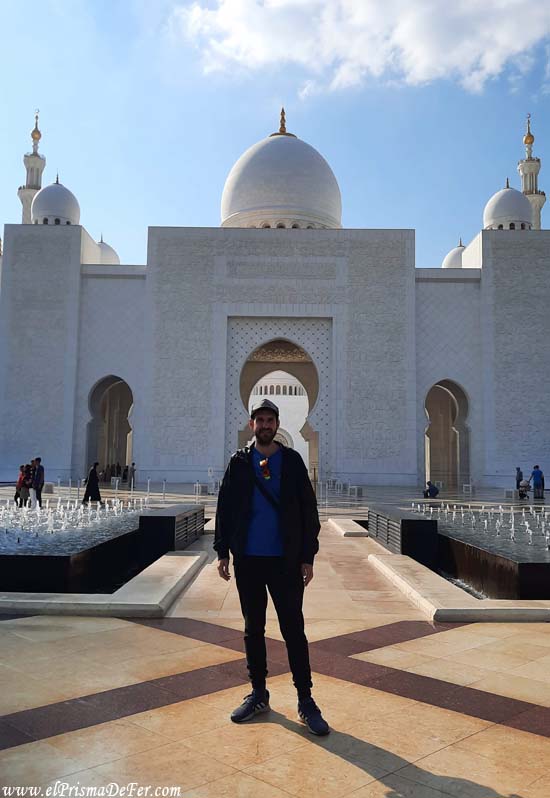
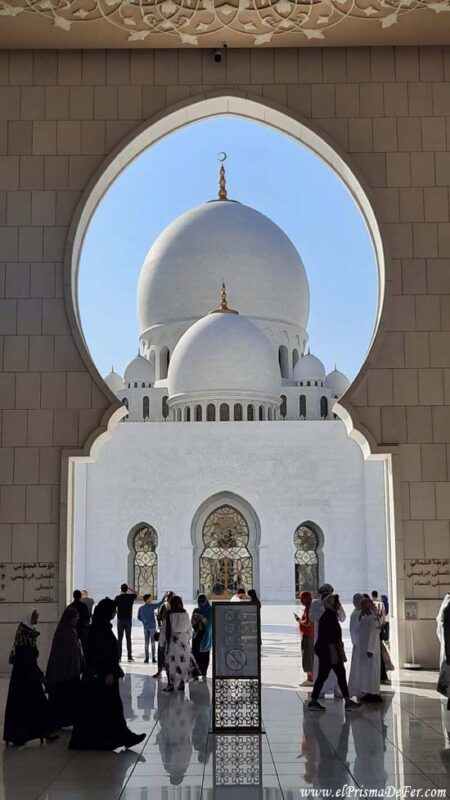
On a personal level, I found it to be one of the most beautiful mosques I have visited, on par with other iconic ones such as the Alabaster Mosque in Cairo or the Blue Mosque in Istanbul. There is a sense of serenity in the atmosphere, especially if you visit at sunset, when the lights begin to come on and the white marble takes on warm tones.
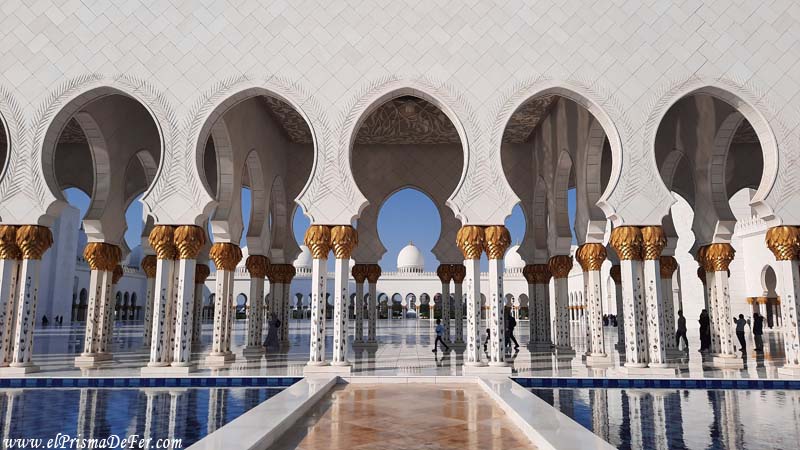
Admission is free, but you must register in advance on the official website. I recommend appropriate clothing (especially for women) and taking at least a couple of hours to explore the site at leisure, both inside and out.
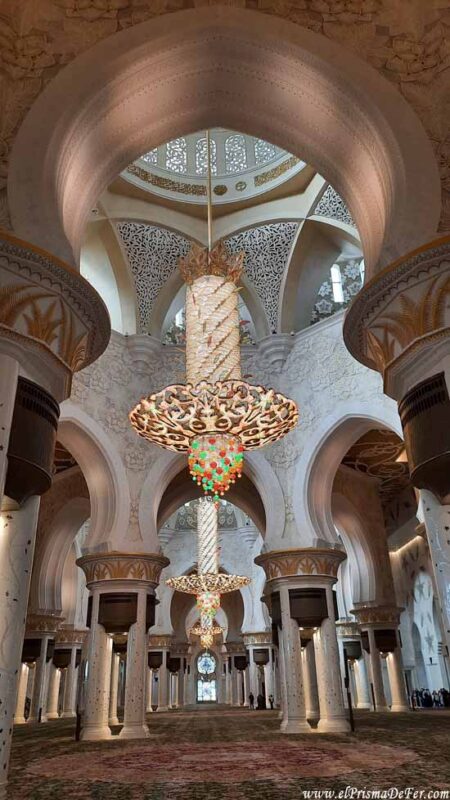
Visit the Grand Mosque on a tour
While entry to the Grand White Mosque in Abu Dhabi is completely free, there are organized tours that are a good alternative if you prefer to avoid the logistics.
These usually include, in addition to the visit to the mosque, a stop at the Presidential Palace (Qasr Al Watan) and the Etihad Towers observation deck, from where you can get a panoramic view of the city.
It's a practical option if you want to make the most of your day without worrying about transportation or schedules.
🧭 Exhibition on the Caliphate of Córdoba (inside the White Mosque complex)
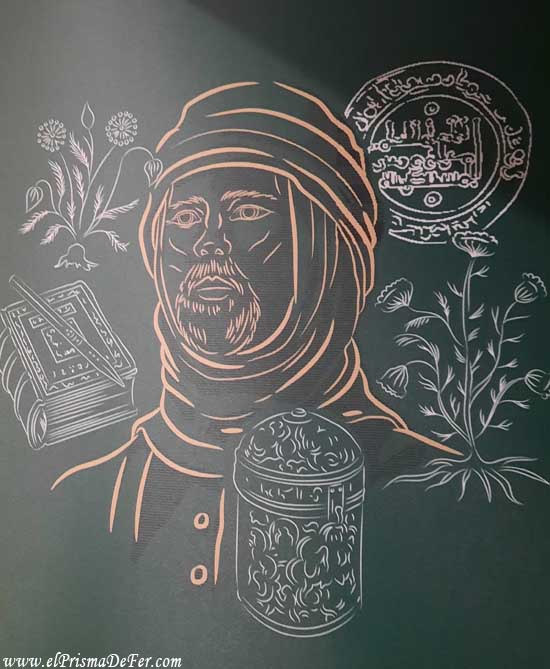
When I visited the White Mosque in Abu Dhabi, I found an exhibition celebrating the cultural legacy of the Islamic world, including the Caliphate of Córdoba, which reached its peak in what is now Spain. Among the notable names was Al-Idrisi, a true genius of the 12th century.
Who was Al-Idrisi? A sage of the medieval world
Al-Idrisi was an Andalusi geographer, cartographer, and traveler, born in Ceuta (present-day Morocco) in 1100, when the Muslim world still maintained a strong presence in the Iberian Peninsula. He studied in Córdoba and traveled across much of the Mediterranean, from North Africa to Europe, collecting geographical, political, and cultural information. His most famous work, commissioned by the Norman king Roger II of Sicily, is known as the Book of Roger, a kind of geographical encyclopedia of the known world at that time.
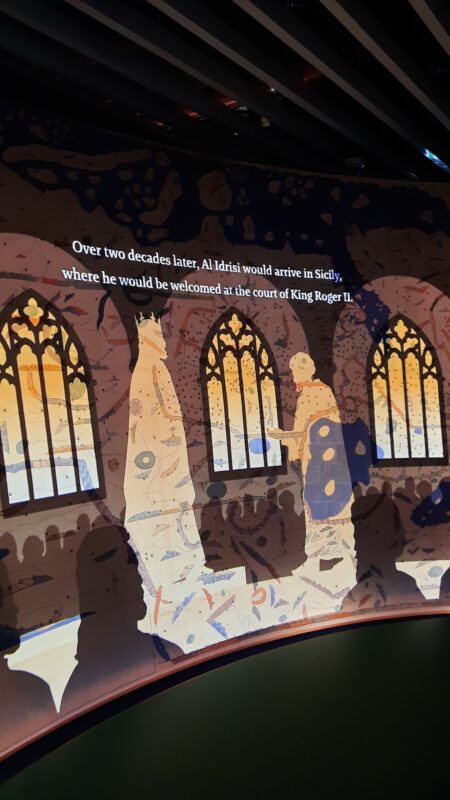
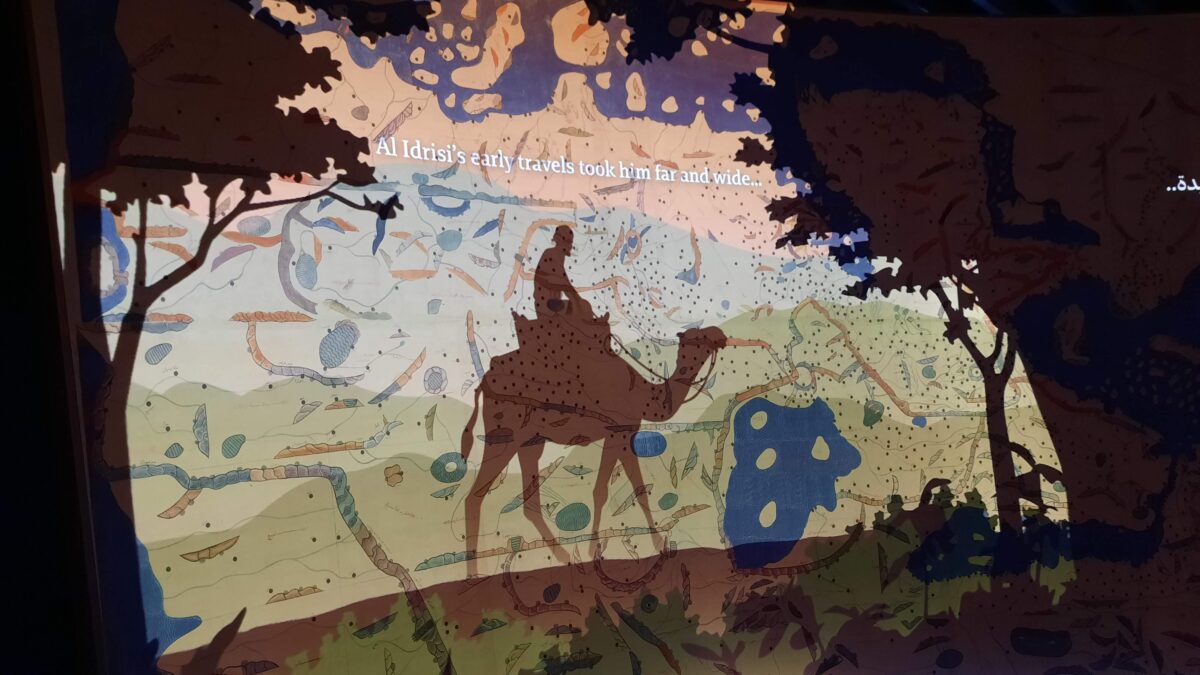
One of the most fascinating aspects of his work is the world map he created in 1154, based on Islamic cartographic traditions but with surprising accuracy for its time. His map depicted rivers, mountains, trade routes, and cities, and for centuries remained a reference in both the Islamic world and Europe.
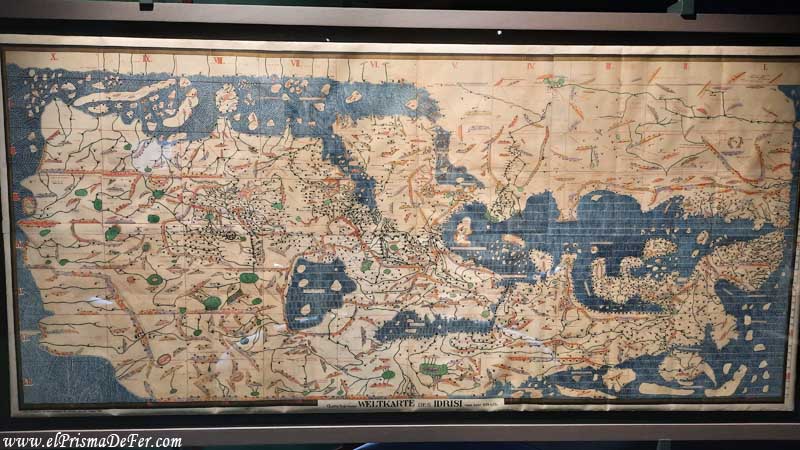
I don't know if this exhibit is on permanently or just occasionally, but if you see it, I recommend going in. It's free, visually interesting, and you might learn something new about the rich culture of the Arab world.
👣 Stroll along the Corniche: beach, bike path, and incredible views
The Abu Dhabi Corniche is one of the most pleasant areas to enjoy the city on foot or by bike. This extensive waterfront stretches for approximately 8 kilometers along the Arabian Gulf, with pedestrian paths, cycle paths, green areas, public beaches, and open views of the sea.

Personally, it was one of my most enjoyable moments in Abu Dhabi. I put on my headphones, chose a good playlist, and just let myself go. I walked back and forth, unhurried, taking in the city's distinctive urban tranquility, with the modern skyline in the background slowly lighting up as the evening fell.

It's a perfect place to experience the slow pace of local life: families strolling, people jogging, tourists taking photos, and children playing. If you're looking for a break from all the luxurious architecture and shopping malls, this walk is a perfect respite.
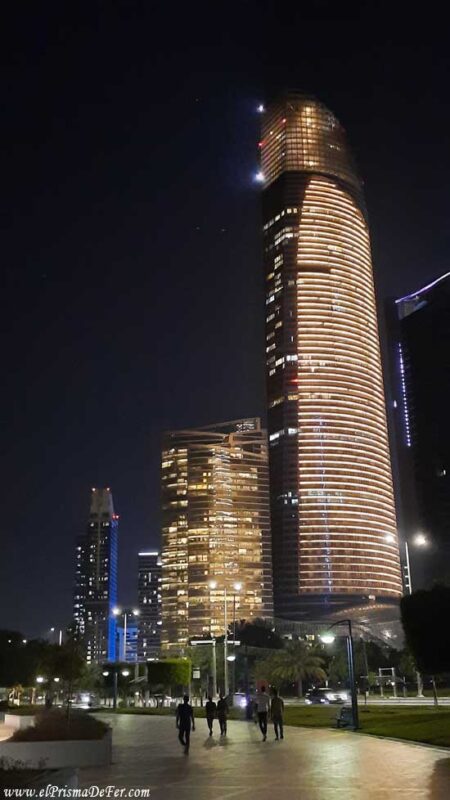
🖼️ Louvre Abu Dhabi Museum and the future Cultural District
Located on Saadiyat Island, the Louvre Museum stands out for its modern architecture. Although not as large as the Louvre Museum in Paris, its floating structure and hypermodern dome design are worth a visit. The museum houses works ranging from Ancient Egypt to contemporary art.
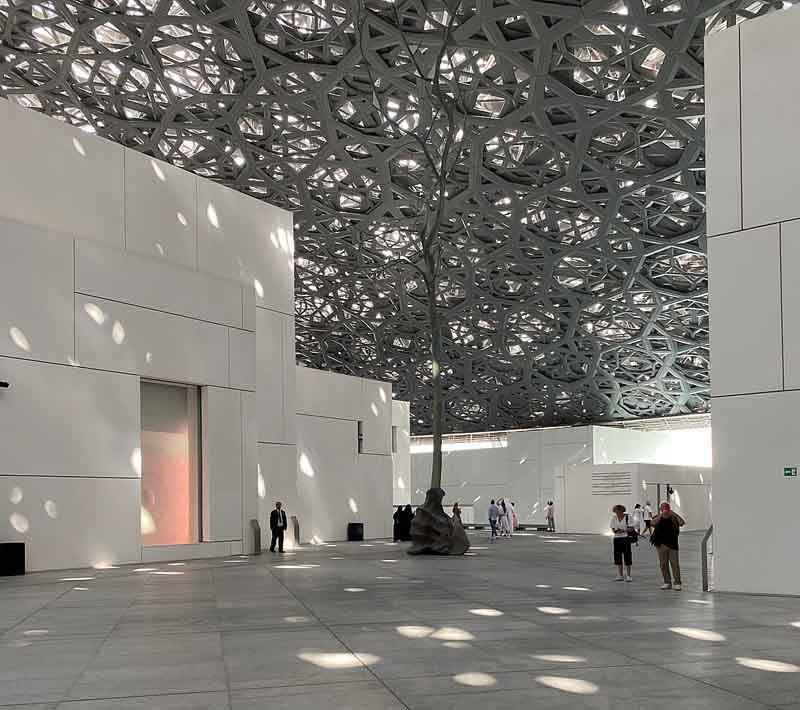
Tickets can be purchased online from the following link.
I was also in the area surrounding the museum and discovered that they were in the midst of an urban transformation: they are building what will become the "Saadiyat Cultural District," which will include the Guggenheim Abu Dhabi, the Zayed National Museum, and other world-class museums.
For now, everything looks like a work in progress, but in a few years it will surely become one of the most important cultural centers in the Arab world.
🛕 Qasr Al Watan: The Presidential Palace is open to the public
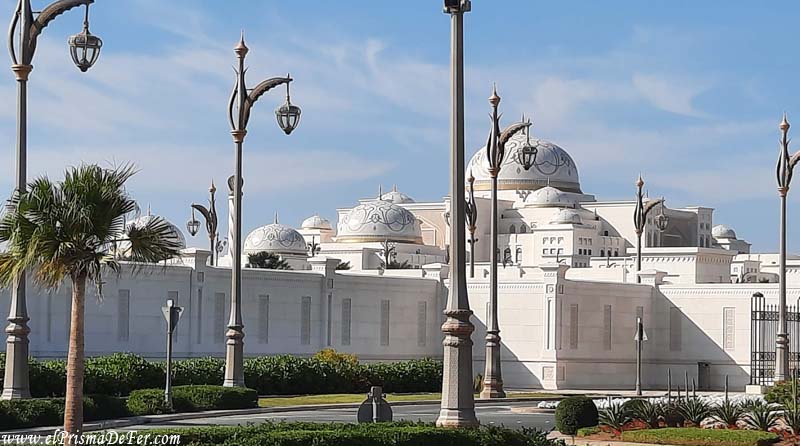
The palace opens part of its halls and gardens to the public, showcasing modern Islamic architecture with striking opulence. It's recommended to arrive early to explore the palace and stay for the nighttime light show if it coincides with your visit.
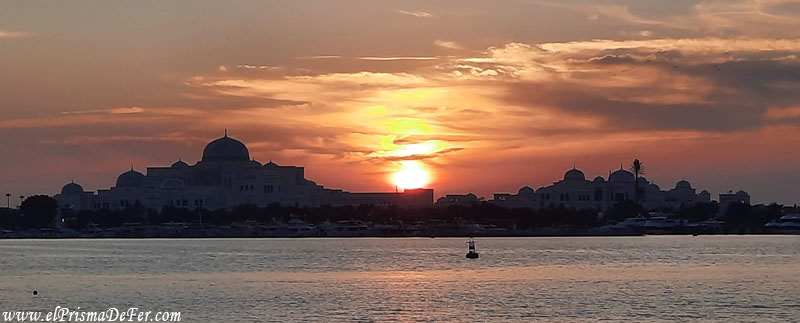
The entrance fee is around AED 65.
🏯 Emirates Palace: luxury and architecture on another level
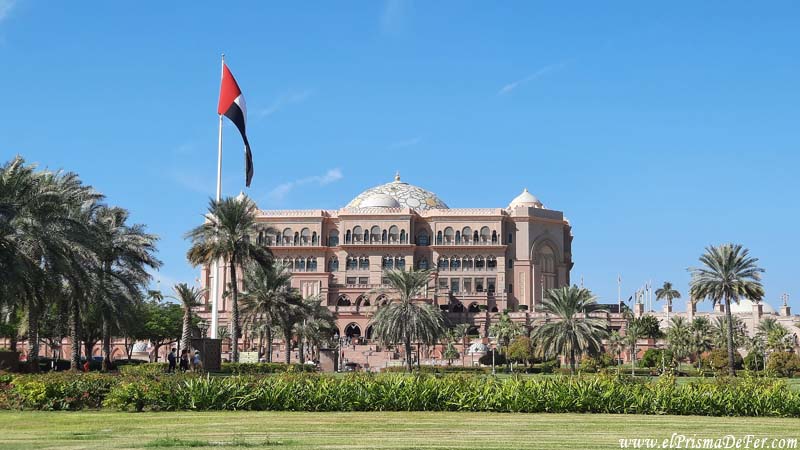
A super-luxury hotel that also functions as a tourist attraction. You can go inside to explore certain areas, and they say you can even get a coffee with gold dust o_O. It's very much geared toward high-net-worth tourists. I didn't go, but it might be worth taking a look from outside the property to appreciate the level of opulence and architectural details.
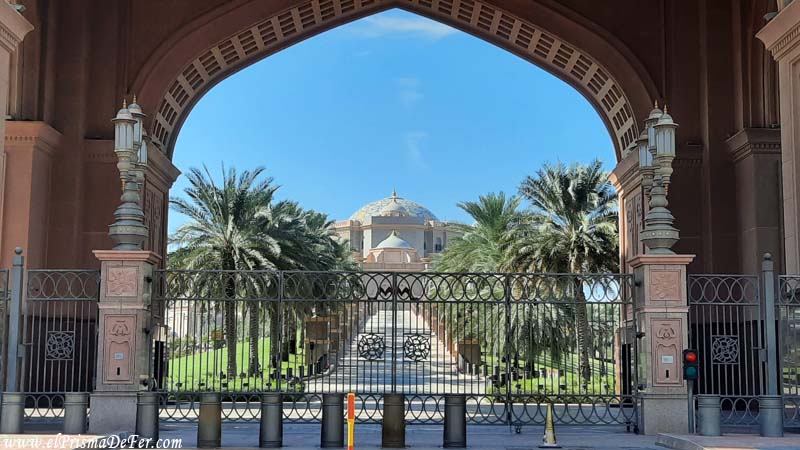
Heritage Village
A sort of replica of a traditional Emirati village, with artisan workshops, mud buildings, and shops selling traditional products. It's all artificial and set up for tourism, but it can give a general sense of the past. From there, you also have beautiful views of the city skyline.
Yas Island: theme parks and Formula 1
Although it's more geared toward family tourism or adrenaline seekers, it's home to Ferrari World, Warner Bros. Park, Yas Waterworld, and the Formula 1 circuit.
I didn't go either, but if you have time or are interested, it could be a different getaway.
📸 Etihad Towers Observation Deck – Observation Deck at 300
The Observation Deck at 300 is located on the 74th floor of Tower 2 of the Etihad Towers. This observation deck offers 360° views of the city, including the Corniche, the Arabian Gulf, and iconic landmarks such as the Emirates Palace and Qasr Al Watan.
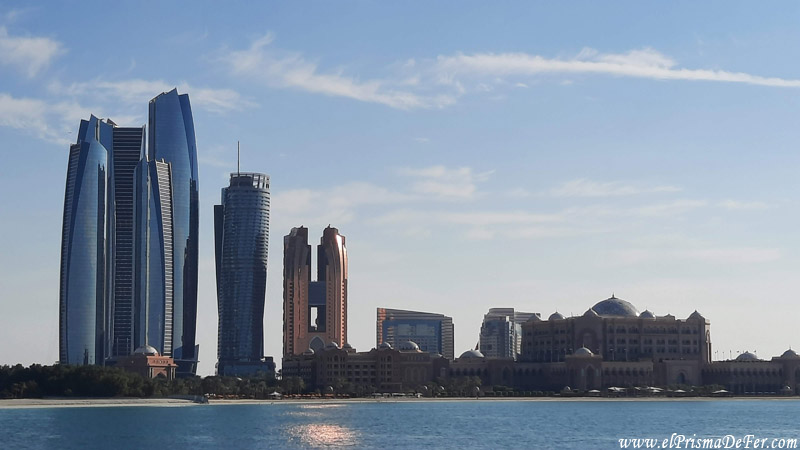
General admission is AED 95 (USD 26) and includes an AED 55 credit for use at the observation deck cafe. You can visit the official website for more information.
Desert Safari
From Abu Dhabi, you can also take a desert safari, similar to the excursion from Dubai. The tour consists of a 4x4 vehicle traveling through the desert, crossing the dunes, sandboarding, dinner in a Bedouin camp, and traditional shows.
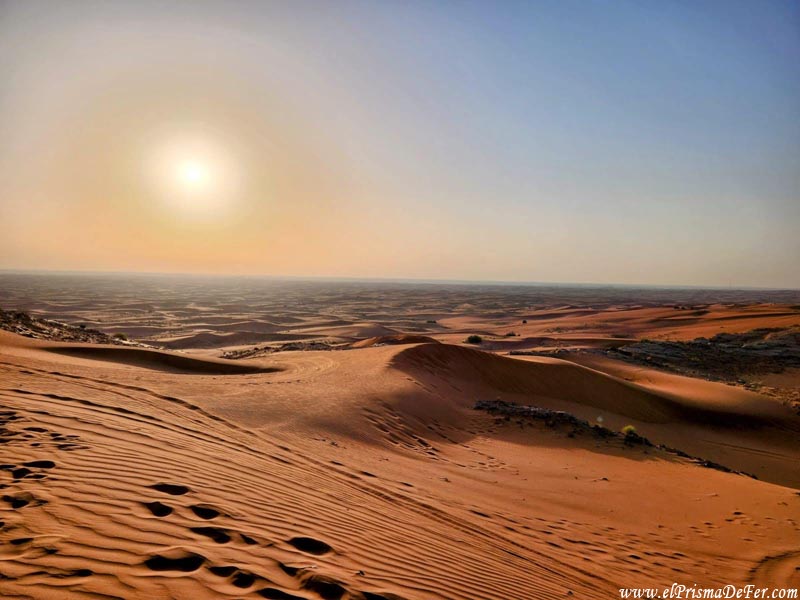
I didn't do it because, just a few weeks earlier, I had been in Morocco, and I had already had a similar experience in the dunes of the Sahara.
But if you want to experience the desert, it might be a good idea, since it's not very expensive.
Organized activities in Abu Dhabi

🚌 How to get to Dubai from Abu Dhabi
As I explained earlier in the section on how to get there from the other emirate, the route to Dubai from Abu Dhabi is similar but in reverse. Several RTA buses depart frequently from Abu Dhabi Central Station to Dubai, which can drop you off at Al Ghubaiba or Ibn Battuta terminals.
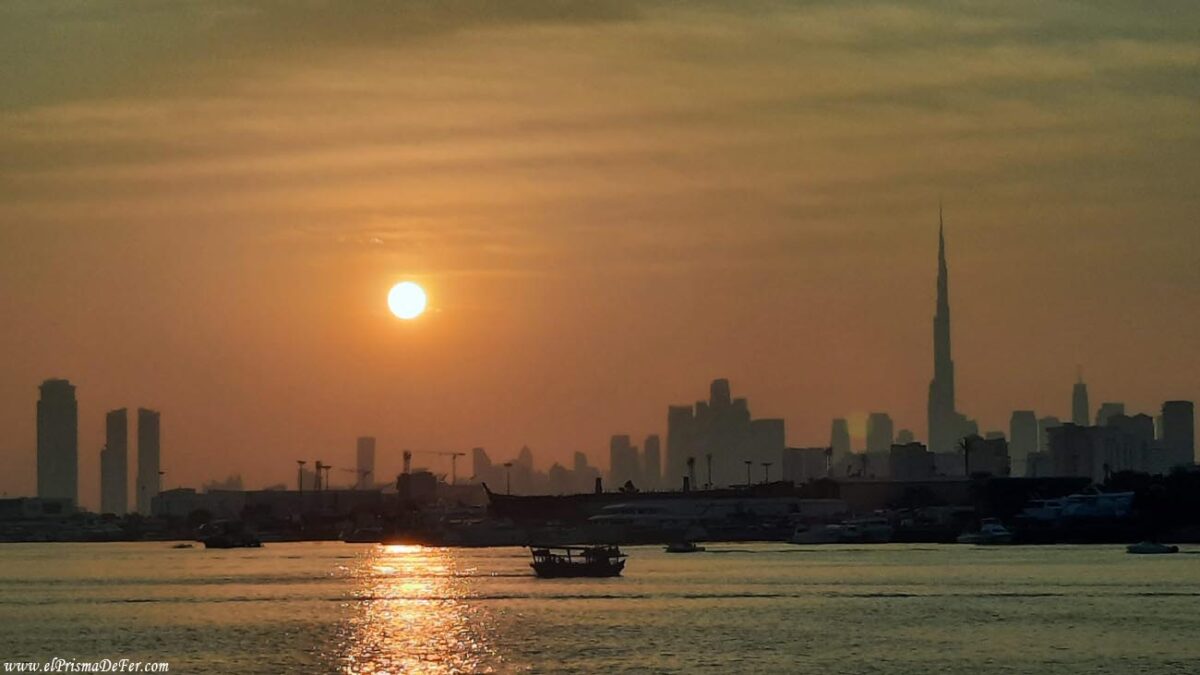
You might be interested in reading about my time in Dubai, an unfiltered post where I tell you about the good and bad things I felt when visiting this eccentric city in the United Arab Emirates
🛏️ Where to stay in Abu Dhabi
For independent travelers or backpackers, accommodation may be a bit more expensive than in other destinations, but there are options to suit a variety of budgets:
- Center / Corniche Area: This is the most convenient if you're looking to get around on foot or by public transport. It offers cheaper hotels, access to local restaurants, supermarkets, and is close to several attractions. The Hamdan Street area is a good place to find good value accommodation.
- Yas Island: If your visit focuses on activities like Ferrari World or the F1 circuit, it may be worth staying here, although prices tend to be higher and the atmosphere is more modern, with less local life.
- Airbnb or private rooms: There are affordable options if you book ahead of time. You can often stay in quiet, well-connected residential areas.
I stayed at The Villa Hostel – By Lunar, one of the few hostels in the city. It has good prices, a great location (close to the start of the Corniche), and an atmosphere where it's easy to meet other travelers.
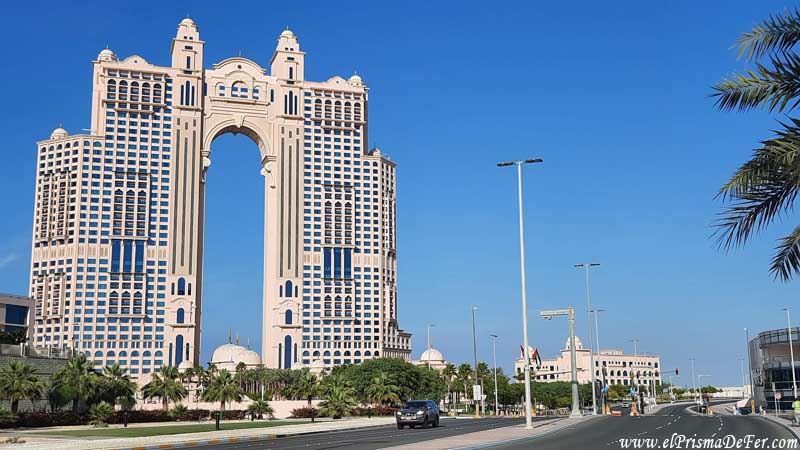
☀️ Best time to visit Abu Dhabi
Both Abu Dhabi and the rest of the Emirates have a desert climate, meaning they have extremely hot summers and mild winters. The best time to visit the city is from November to March, when temperatures are relatively mild, with daytime temperatures (20–28°C) and cool nights.
Summer is the low season, as the heat can be unbearable, with highs exceeding 40°C.
📅 How many days should you spend in Abu Dhabi?
In just one or two days, you can get a very good idea of what Abu Dhabi has to offer. If you're just passing through or coming from Dubai, a day trip will allow you to see must-sees like the Sheikh Zayed Grand Mosque and stroll along the Corniche.
But if you like to travel without rushing, two or three full days will allow you to enjoy the city more leisurely. You can add a visit to the Louvre Abu Dhabi, spend an afternoon on Saadiyat Island, or tour Qasr Al Watan, the presidential palace, which is also open to the public.
In short: you don't need a week, but you shouldn't underestimate it either.
Final thoughts on my visit to Abu Dhabi
My time in Abu Dhabi was peaceful. Unlike what I'd discover in neighboring Dubai, this city doesn't overwhelm with a cascade of attractions or world records, but that's precisely where part of its charm lies. My favorite thing, without a doubt, was walking along the Corniche. This waterfront promenade is ideal for relaxing, watching the sunset, or simply observing local life go by.
And without a doubt, the most striking highlight was visiting the Sheikh Zayed Grand Mosque. That majestic, silent, white structure, where a climate of peace and wonder blends. It's one of those places that leaves you speechless, not only because of its beauty, but also because of the energy it transmits. In short, Abu Dhabi offered me fewer places to "see," but more space to relax.
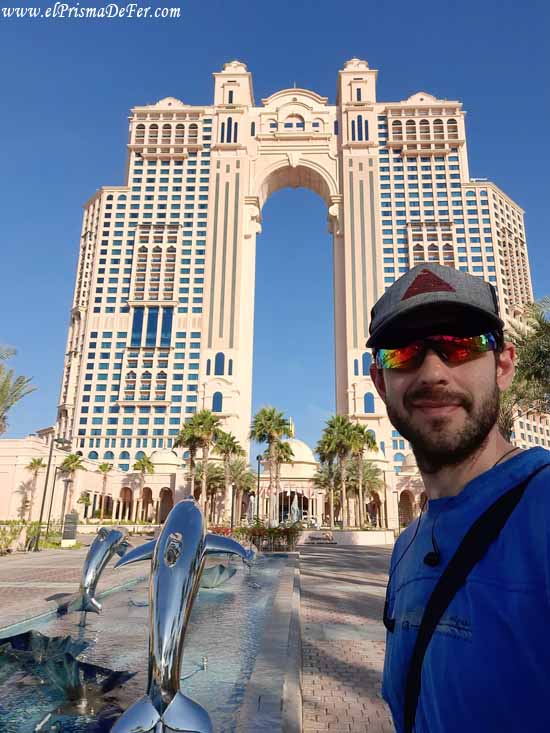
Video of Abu Dhabi
Support The Prism of Fer!
Your support helps me continue creating free content on the blog. Thank you so much!



What a great article about Abu Dhabi! This text is a full-fledged travel guide, which is a great help in discovering destinations with personality. You take us by the hand through the capital of the Emirates with a friendly tone, mixing practical information with personal impressions that make you want to hop on a plane. It's super comprehensive, from how to get there to where to eat.
I love how you start with that surprise realization that Emiratis are almost a rarity on the streets, making it clear that Abu Dhabi is a city shaped by its migrant workers. The Sheikh Zayed Grand Mosque sounds like a dream, with its giant Persian carpet and Swarovski chandeliers, and you describe it with such affection that you can almost feel the cool marble under your feet. The Corniche, with its leisurely promenade and skyline views, seems like the perfect place to unwind, and the mention of the exhibition on the Caliphate of Cordoba and Al-Idrisi is an unexpected touch that adds a fascinating cultural twist.
The article shines for its usefulness: the map of must-see places, the tips for getting around by bus or taxi, and the accommodation recommendations like The Villa Hostel are gold for independent travelers. The variety of options, from the luxury of the Emirates Palace to a family adventure on Yas Island or history at Heritage Village, makes Abu Dhabi seem like a destination for everyone. I've been dying to walk along the Corniche at sunset.
Kind regards
Thanks for your kind words, Marcos! The idea behind this post was to provide useful information for independent travelers, combining it with my own personal experiences.
Hugs to you!
Thank you so much, Fer, for such a wonderful post. I'm currently planning a trip to Abu Dhabi and Dubai, and you were a great help. Excellent for sharing your knowledge without bias.
Thanks for your kind words, Karlita! Enjoy your trip!